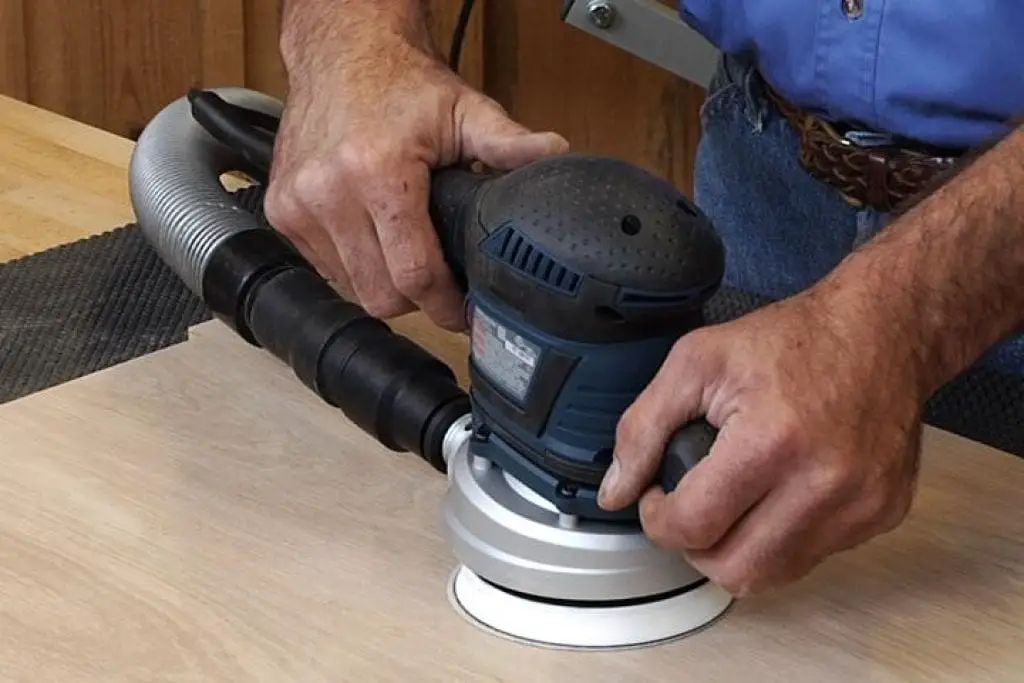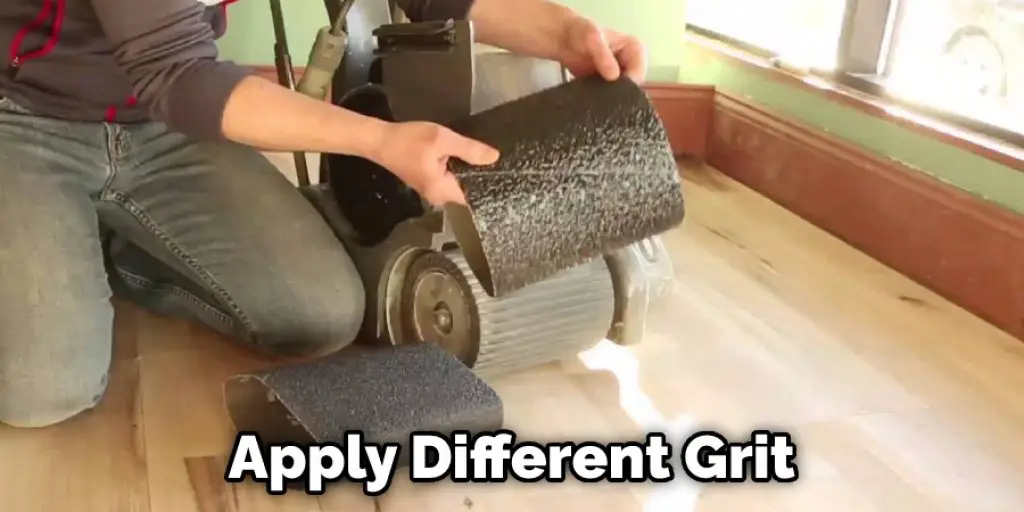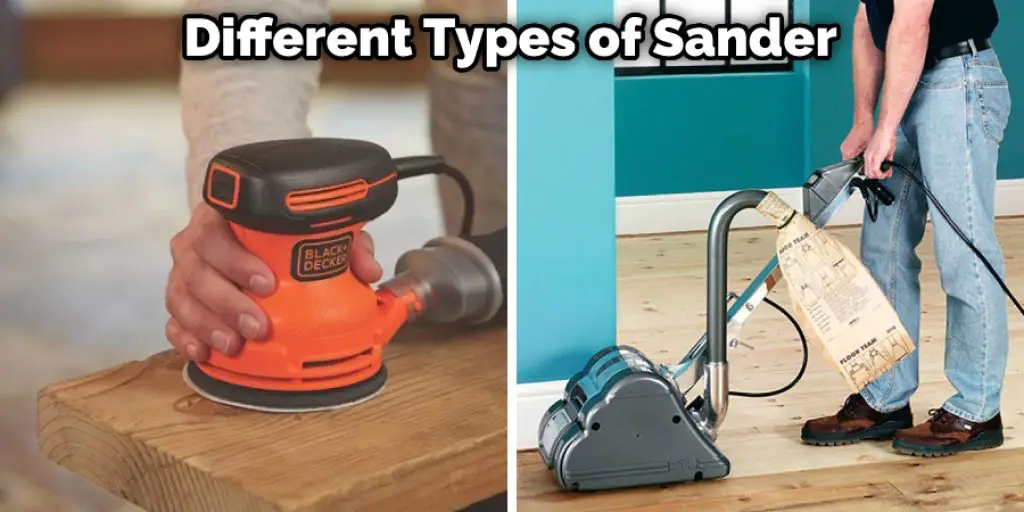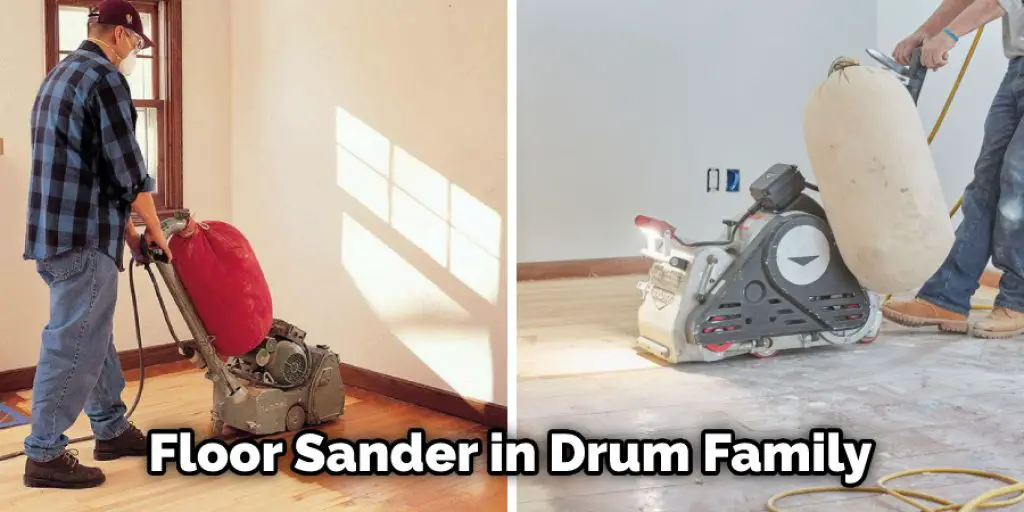Woodwork is incomplete without a sander. The finish that comes from a sander is impossible to get with any other tool. A sandpaper do the same work but for a big woodwork project nothing can be best than a sander. It can do much better job than sandpaper or any other tool. Its fast and efficient ability to give a shine and smooth finish is simply unavoidable. One sander is enough to make hundreds of woodwork projects. Simple, easy and fast tool that all you need while working on wood.

Get the best sander that suits your need. However, it is not easy to get it because to ease your work different types of sanders are in the market. Moreover, the regional nicknames of sander will confuse you making you buy an ordinary tool that might not work on your project. Thus, before you get confuse with its name let us tell you what kind of sanders will you see in the market.
11 different types of sanders
Surprised, yes you will see 11 different sanders that are useful in woodwork projects. Some of them are stationary while others are hand held. However, both of them work on two basic concepts- both they use flat surfaces and they use drums. One with flat surfaces is usually round and that with drum uses belt. They are usually seen in plastics industry or in metal shops.
Surface sanders are also categorized as follows:
Belt sander– in modern workshop belt sanders is usually seen. It has two drums, one is rear motorized while other moves freely and both are wrapped by a sanding belt. Four sizes of belt sander are available – 3×18 inch, 3×21 inch, 3×24 inch and 4×24 inch sanders. All four different sizes are best to give a finish to wood. Belt sanders are common for furniture making as well as woodwork projects of large scale.
Disc sander- the unusual type of sander, disc sander has a round disc and an attachment for power drill. Depending upon the project, one can apply different grit of various sizes. Its hand-held version gives smooth finish by adjusting speed of disc. The stationary version of disc sander is best for metal and plastic work due to its adjustable surface which allows the job to be set at different angles.
Disc sander- the unusual type of sander, disc sander has a round disc and an attachment for power drill. Depending upon the project, one can apply different grit of various sizes. Its hand-held version gives smooth finish by adjusting speed of disc. The stationary version of disc sander is best for metal and plastic work due to its adjustable surface which allows the job to be set at different angles.

Detail sander- This one got different names such as triangle sander, corner and mouse sander. It resembles to an iron due to a triangular pod it has. This is pretty small and has multiple attachments which are best for more precise work. It can reach crevices which is not possible with an ordinary sander.
Drywall sander- it resembles to a metal detector but it’s a disc sander with a handle. Some models of drywall sander come with a vacuum making it easier to collect dust particles. Due to its long handle it is best to work on ceilings for removing excess adhesives and smoothening surfaces.
File sander- finger sander or file sander has extremely narrow belt and is either air powered or electric. Thus, they easily fit into smaller spaces which make it excellent for detail work. Regular sandpaper will not be effective for such detail work.
Orbital sander- This is excellent tool since it is compact and allow user to handle it with single hand. It is known by various names making it more popular among woodwork artists. Circular sander, pad sander, quarter sheet sander, vibrating sander, finishing sander, sheet sander, palm sander and rotary sander are names by which you will get in the market. It is designed for ultra fine work such as for getting ultra smooth surfaces, round sharp edges and putty. It is light weight tool good for getting sharp edges.
Oscillating spindle sander or OSS- OSS is among different types of sander that belongs to drum family. It has a freestanding table with a stick out sanding drum. It also comes in different drum sizes up to 4 inches in diameter. Few models use standard sanding belts to turn the OSS into a belt sander. It can perfectly smooth the edges of boards and angle the table’s front up to 45 degrees. It is perfect to work on curve surface.

Random orbital sander– its design is similar to orbital sander but has a round pad which can spins in small circular orbits. The dual action sander is an all round sander as it can work as an orbital sander as well as belt sander. The sander comes in different pad sizes and grip variants making it a popular and excellent sander with one handed palm grip. Thus, many workshops uses random orbital sander because of versatility.
Table sander- big, powerful and popular sander, table sander is a stationary belt sander. It is popular in industries and large woodworking shops. They are high power sanders which are commonly used
You Can Check It Out to Use an Orbital Floor Sander?
Floor sanders
The second category among different types of sanders is floor sander which has distinguished features. They are used for prepping and stripping floors and often come in two basic varieties.
Drum sander– this is a powerful and heavy floor sander in drum family. This is usually rented and requires more than one people to transport. One has to be careful while using drum floor sander it is too powerful to handle and can create gouge marks on floor if not handled carefully. They can remove adhesives, paint and unwanted substances from floors.

Edge sander– good for floor refinishing edging sander is a heavy duty floor sander. It can be used on stair surfaces and edges of floors where drum sander cannot reach easily. They are smaller yet powerful tool that work closely to the ground. Like drum sander, they should be handled carefully or they can damage the floor and cause injury. So, these were the different types of sander that can make your all kind of wood and floor work easier. Most of the sanders are similar and give similar finish but one can differentiate between them depending upon the job for you need. Get the best sander for your work!
Frequently Asked Questions
What Type of Sander Will Give the Best Finish?
When it comes to wood finishes, there are many options available, and each has its own benefits. The most popular type of sander for finishing wood is the belt sander. This type of sander uses a rotating drum that grinds the surface of the wood down to a smooth finish.
When shopping for a belt Sander, make sure to choose one that has appropriate grit ratings based on your project’s requirements. You also want to make sure that the sandpaper is properly conditioned and maintained in order not to damage your finished project.
Another popular option for finishers is an Orbital Sander. These machines use small rotors or pads that rotate at high speed over the workpiece (usually timber) suspending dust and debris below it so they don’t end up on the finished product. As opposed to using belts or disks, this method results in a smoother finish because detritus doesn’t stick around long enough to cause problems later on.
Both types of sanders require some level of skill and experience in order to be used efficiently; however, if you’re looking for hassle-free results with little effort then either might be what you’re looking for.
How Do I Know Which Sander to Use?
There are a lot of different types of sanders on the market, and it can be difficult to know which one is best for your needs. In this article, we’ll discuss the different types of sanders and how they work.
There are three main types of sanders – belt sanders, orbital sanders, and woodworking sanders.
Belt sanders are the most basic type of sander and are used mostly for rough surfaces. They have a single belt that is used to move the woodworking or orbital sander across the surface.
Orbital sanders are similar to belt sanders, but they have two belts that rotate in opposite directions. This allows them to achieve a finer finish than belt sanders.
Woodworking sanders are the most advanced type of sander and are used for more intricate work. They have multiple belts that rotate in various directions and can be used on both wood and metal surfaces.
What Are the Different Types of Sanders for?
There are many types of Sanders, but the most common ones include pure or distilled water Sanders, Brine-Water Sanders, and EspressoSanders.
Pure or distilled water Sanders uses only purified water to produce a rich espresso-like cup of coffee. This is the type of machine that you typically find at home cafés. Brine-Water Sanders uses saltwater as part of the brewing process and produces a slightly more diluted coffee than with pure water. EspressoSanders combine both methods by using filtered cold water first to create espresso and then adding hot brine (salt) to finish it off.








